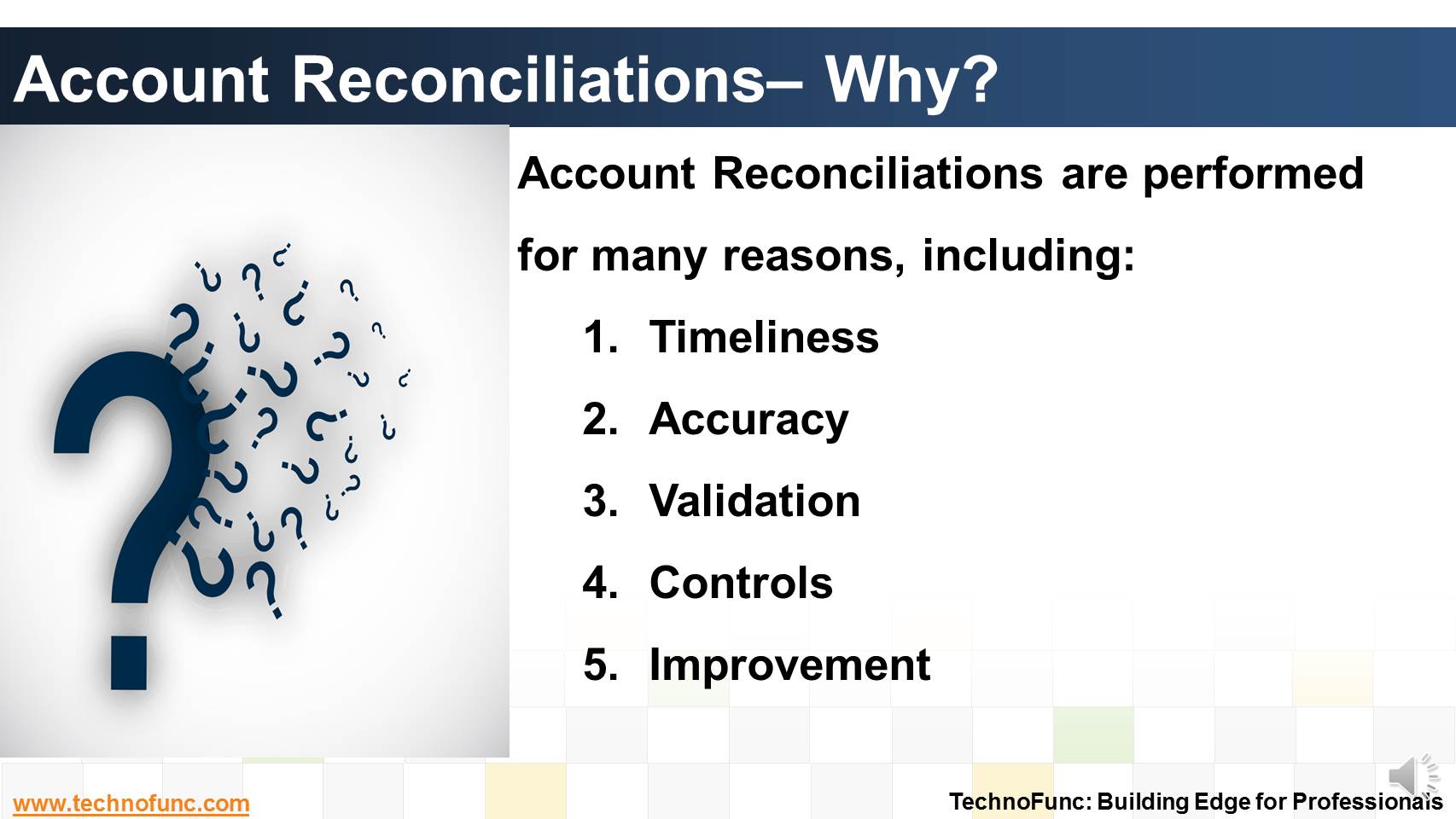- Home
- Business Processes
- Industry Knowledge
- Aerospace Industry
- Automotive Industry
- Banking Domain
- BFSI Industry
- Consumer/ FMCG Industry
- Chemicals Industry
- Engineering & Construction
- Energy Industry
- Education Domain
- Finance Domain
- Hospitality Domain
- Healthcare Industry
- Insurance Domain
- Retail Industry
- Travel and Tourism Domain
- Telecom Industry
- Leadership Skills
- eLearning
- Home
- Business Processes
- Cash Management
- Account Reconciliations– Why?
Account Reconciliations– Why?
In the previous article we talked about the meaning of the account reconciliations. Now as you now the definition of account reconciliation, in this article let us see why it is carried out.
Account Reconciliations –Why?
Personnel with responsibility for Account Reconciliations hold key Controllership responsibilities. Account Reconciliations are performed for many reasons, including:
Timeliness:
To ensure transactions are timely recorded in the general ledger in the right accounting period, following the matching concept under accrual accounting.
Accuracy:
To ensure transactions are accurately recorded in the correct statutory entity.
Validation:
To identify, document, track and explain transactional differences between general ledger and sub-ledger balances and/or other independent sources. In case of bank reconciliation, general ledger balance is validated against the bank statement.
Controls:
To identify and guard against fraudulent activity, identify errors and reduce losses.
Improvement:
To conduct root cause analysis on any operational defects identified and execute process improvement projects to address them

Related Links
You May Also Like
-
Cash Management - Integrations
Cash Management integrates cash transactions from various sources like Receivables, Payables, Treasury and creates reconciliation accounting entries after matching transactions with Bank Statements.
-
Bank reconciliation process is targeted to validate the bank balance in the general ledger and explain the difference between the bank balance shown in an organization's bank statement. Learn the reasons for existence of differences between the two.
-
Technology has enabled the treasury function by providing various solutions to manage it's complicated tasks. This article explains various types of treasury management systems available in the market.
-
Account Reconciliation – How? Learn the three key attributes to perfom account reconciliation.
-
Have you ever wondered what is actually a Bank Statement and why it is needed. What is the information that is available in a bank statement?
-
Treasury has increasingly become a strategic business partner across all areas of the business, adding value to the operating divisions of the company. Managing activities that were traditionally carried out within the general finance function. Learn about the drivers for this change.
-
The objective of funding Management is to implement strategies that lead to the best borrowing rates and lower investment costs. Learn how treasury aids in loans and investment management functions.
-
In automated clearing, Bank statement details are automatically matched and reconciled with system transactions. Learn how this process works and what are the perquisites to enable the same.
-
The topic for this lesson is "Introduction to Cash Management Process". We start with the learning objectives for building requisite functional expertise in cash management process.
Explore Our Free Training Articles or
Sign Up to Start With Our eLearning Courses

About Us
Learning
© 2023 TechnoFunc, All Rights Reserved











